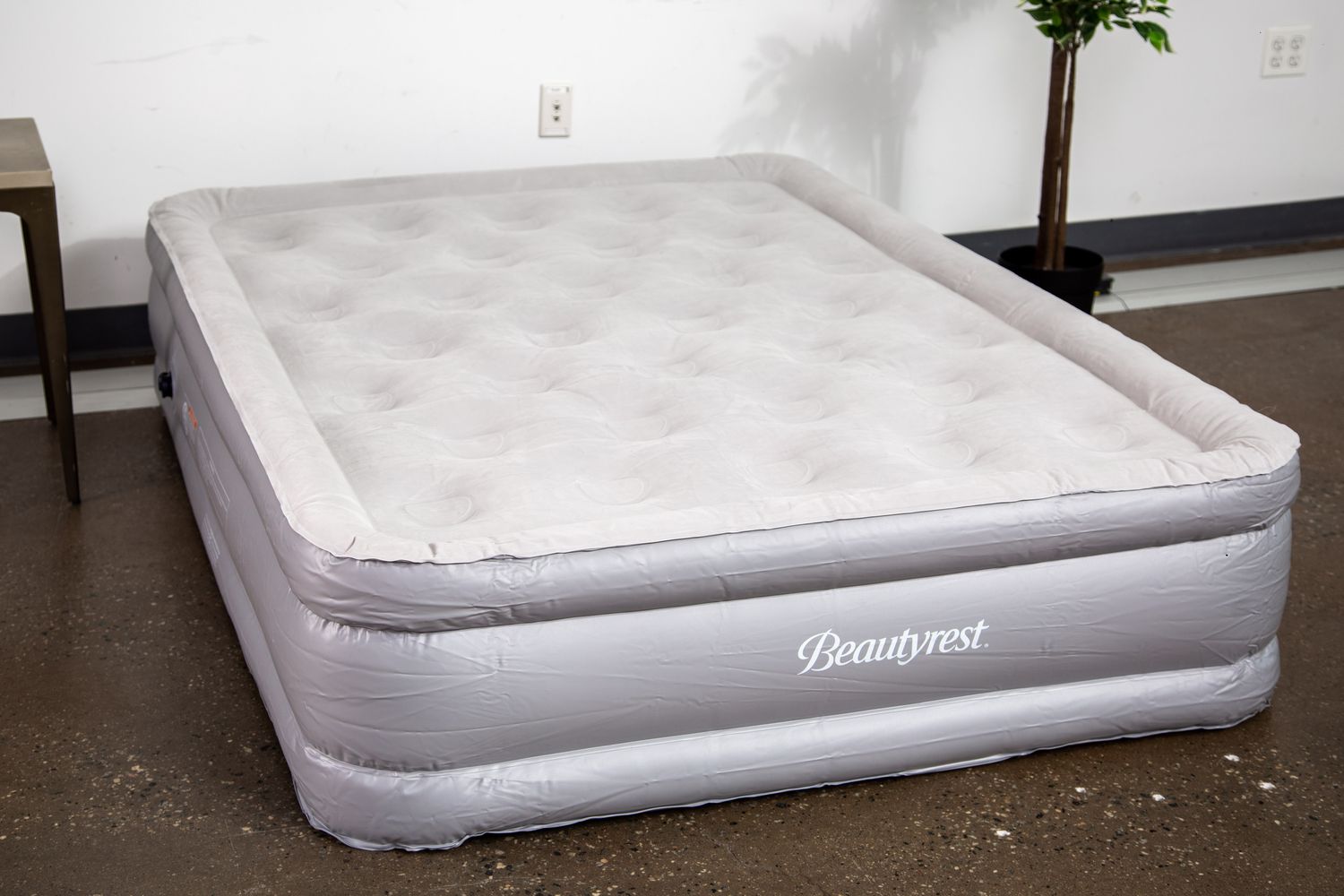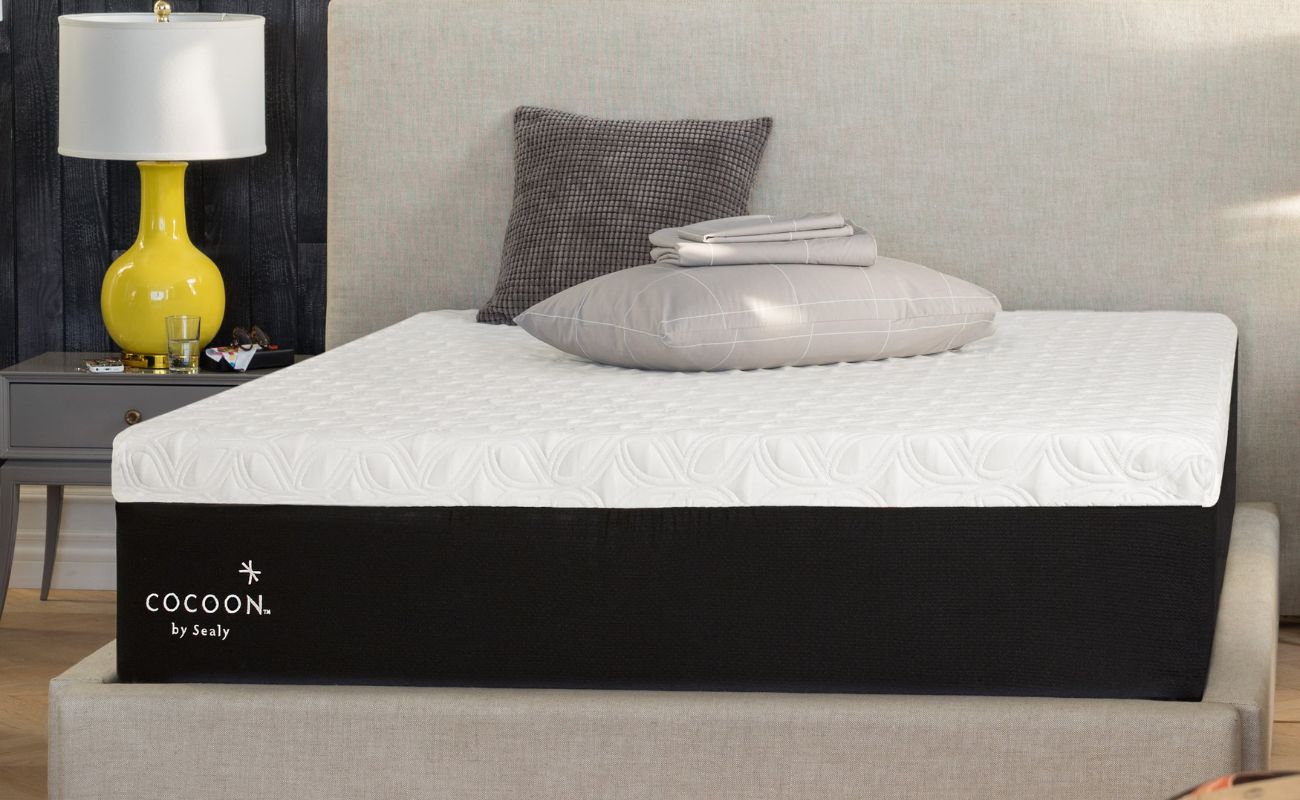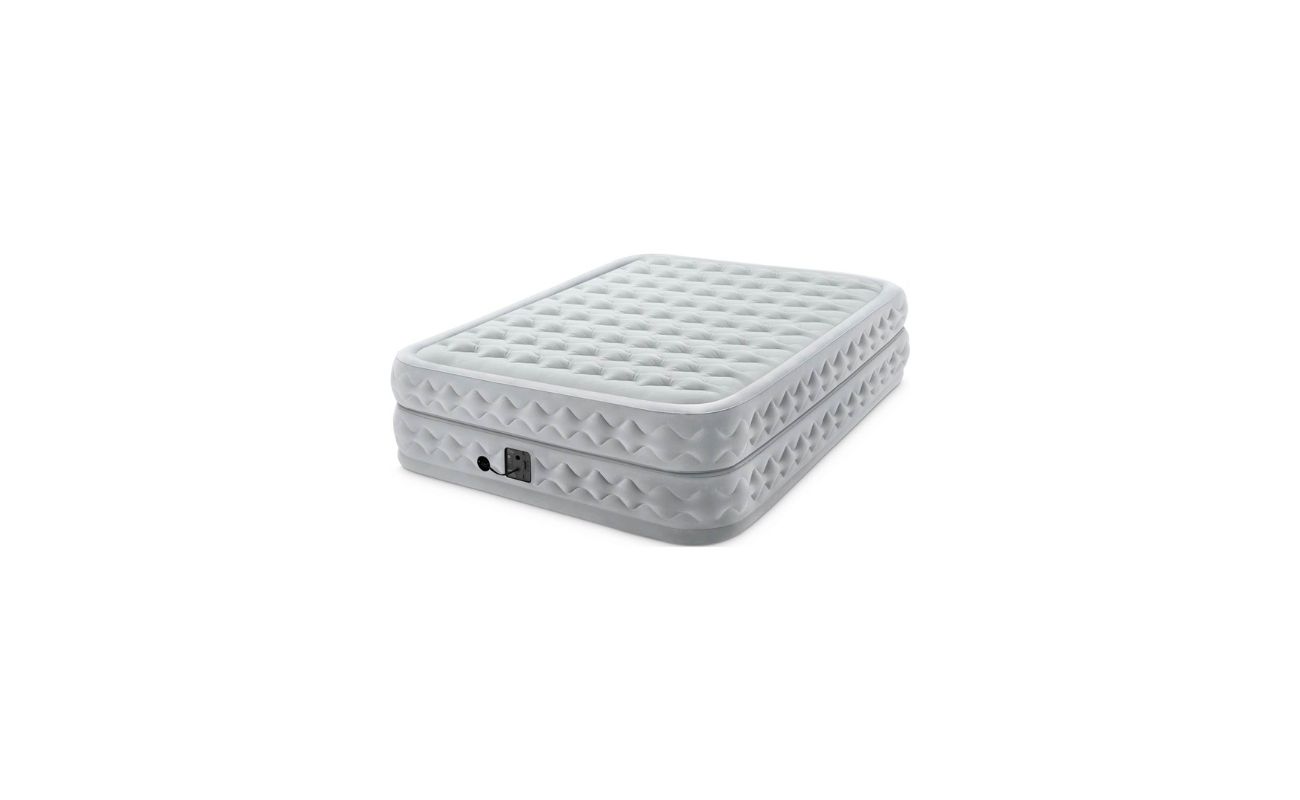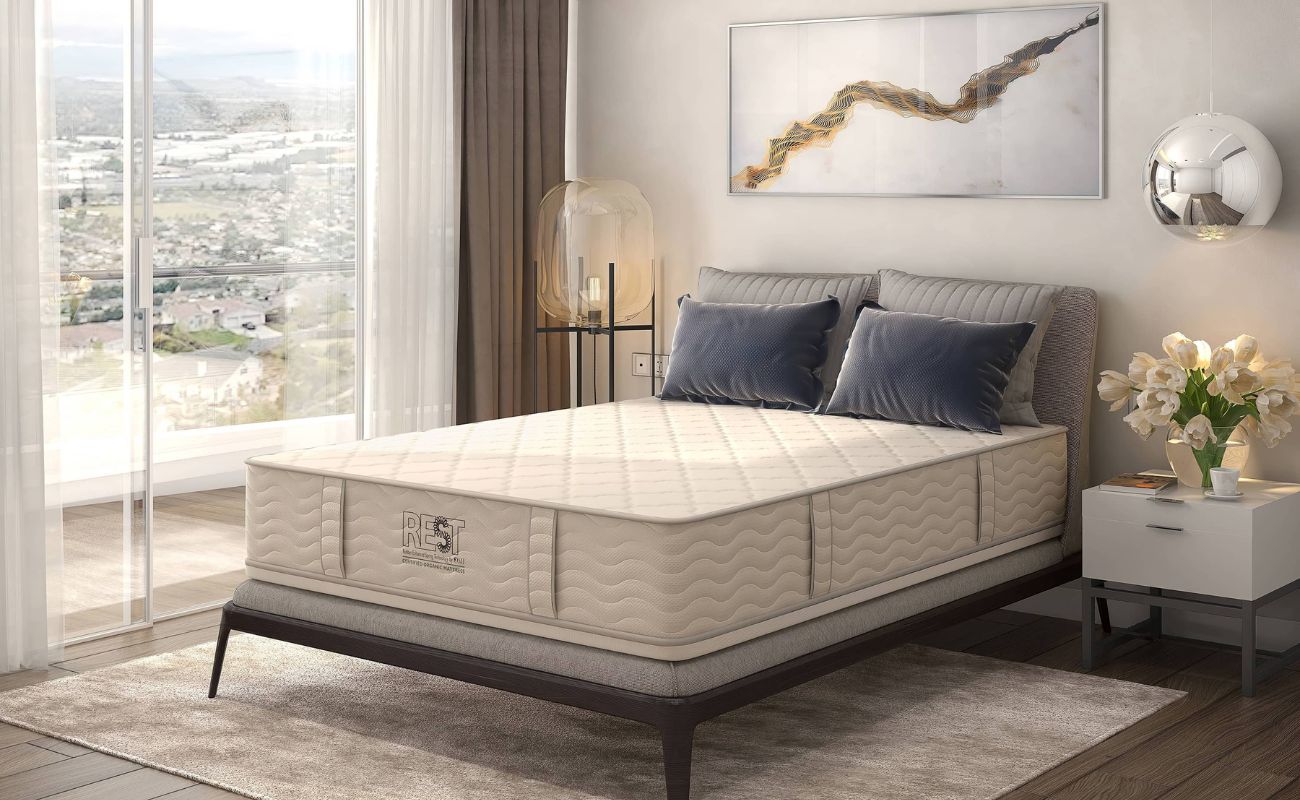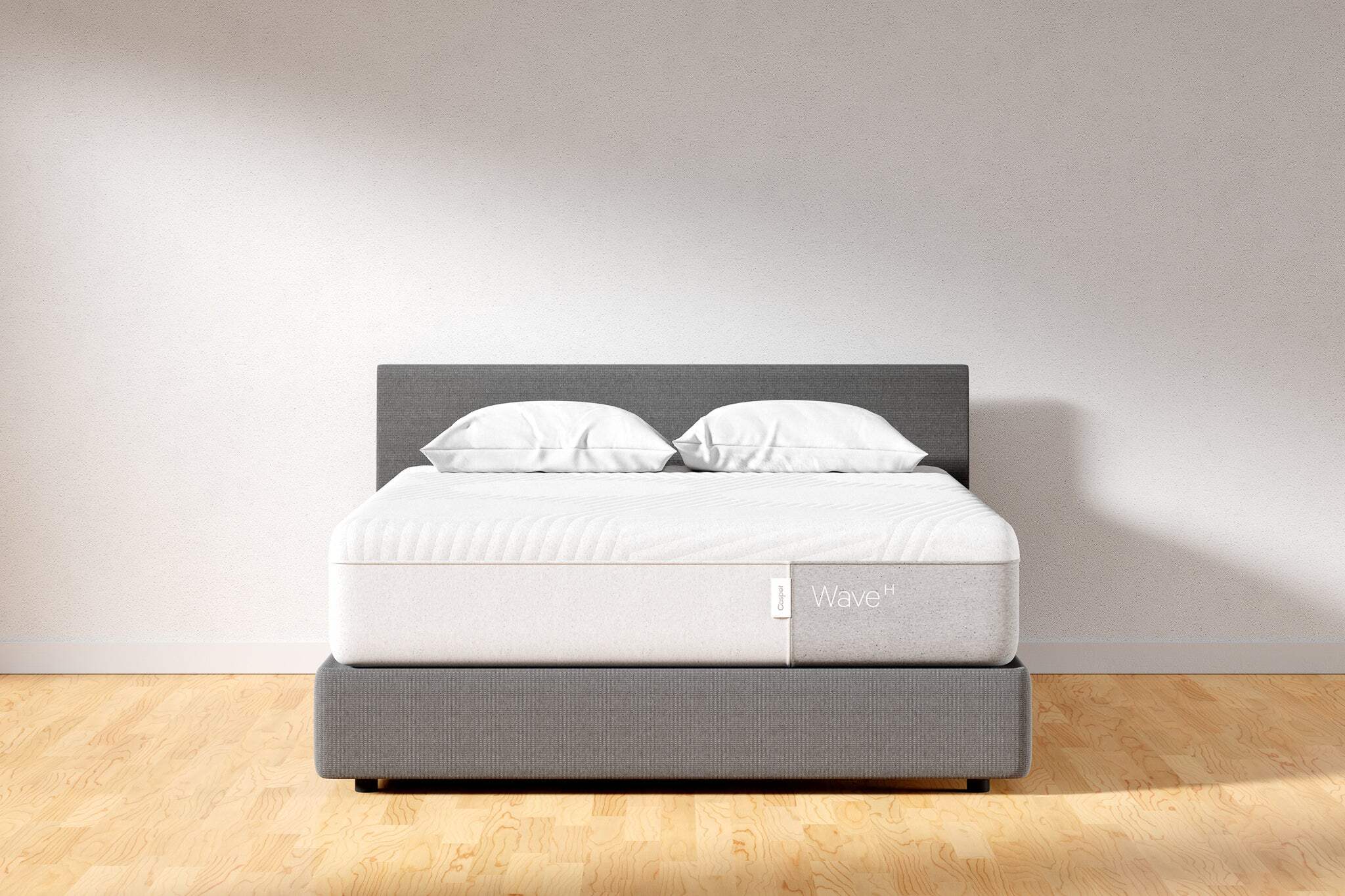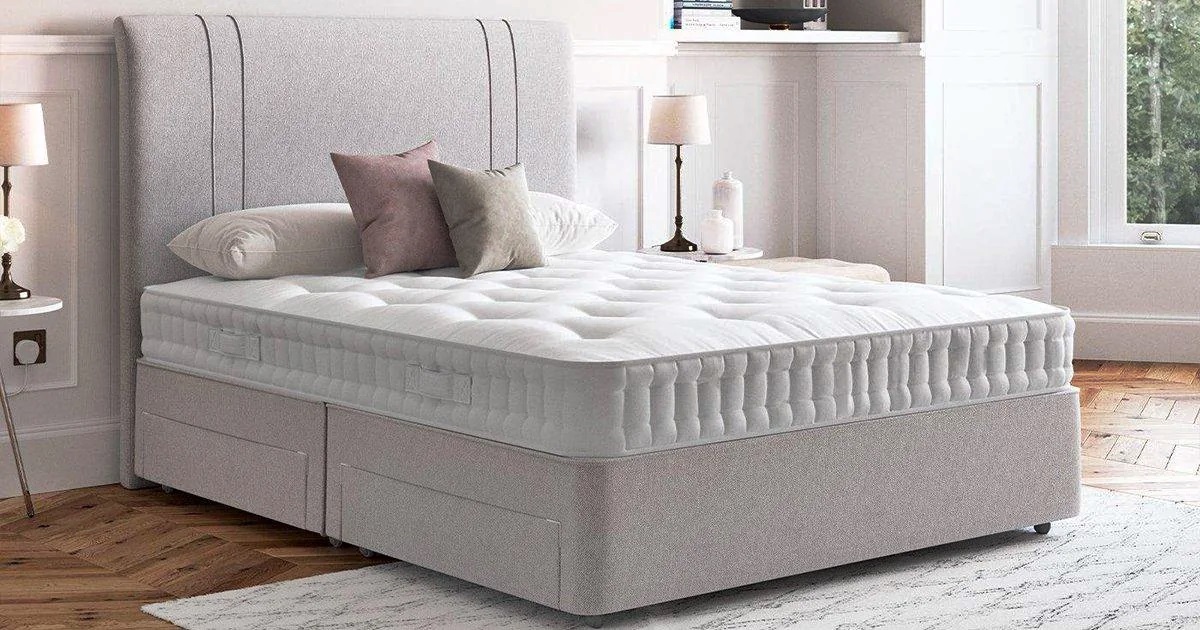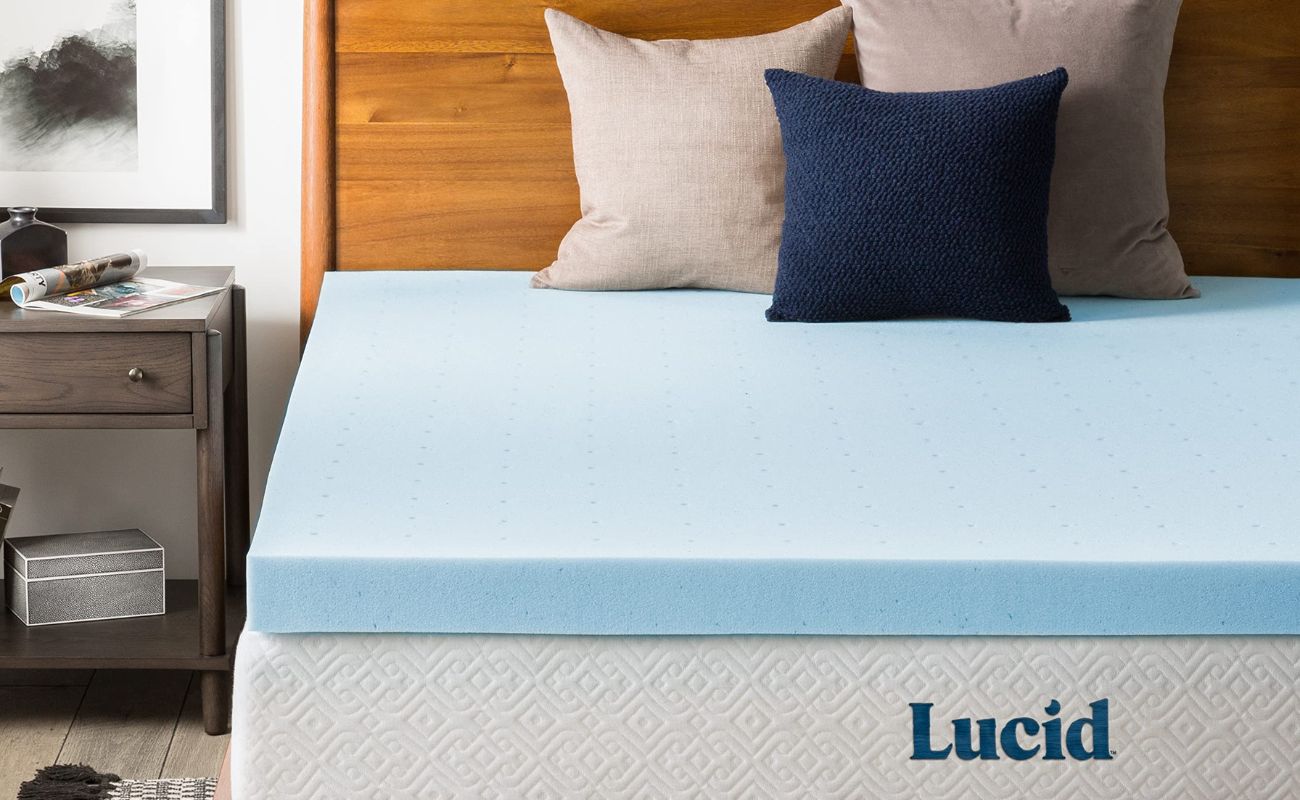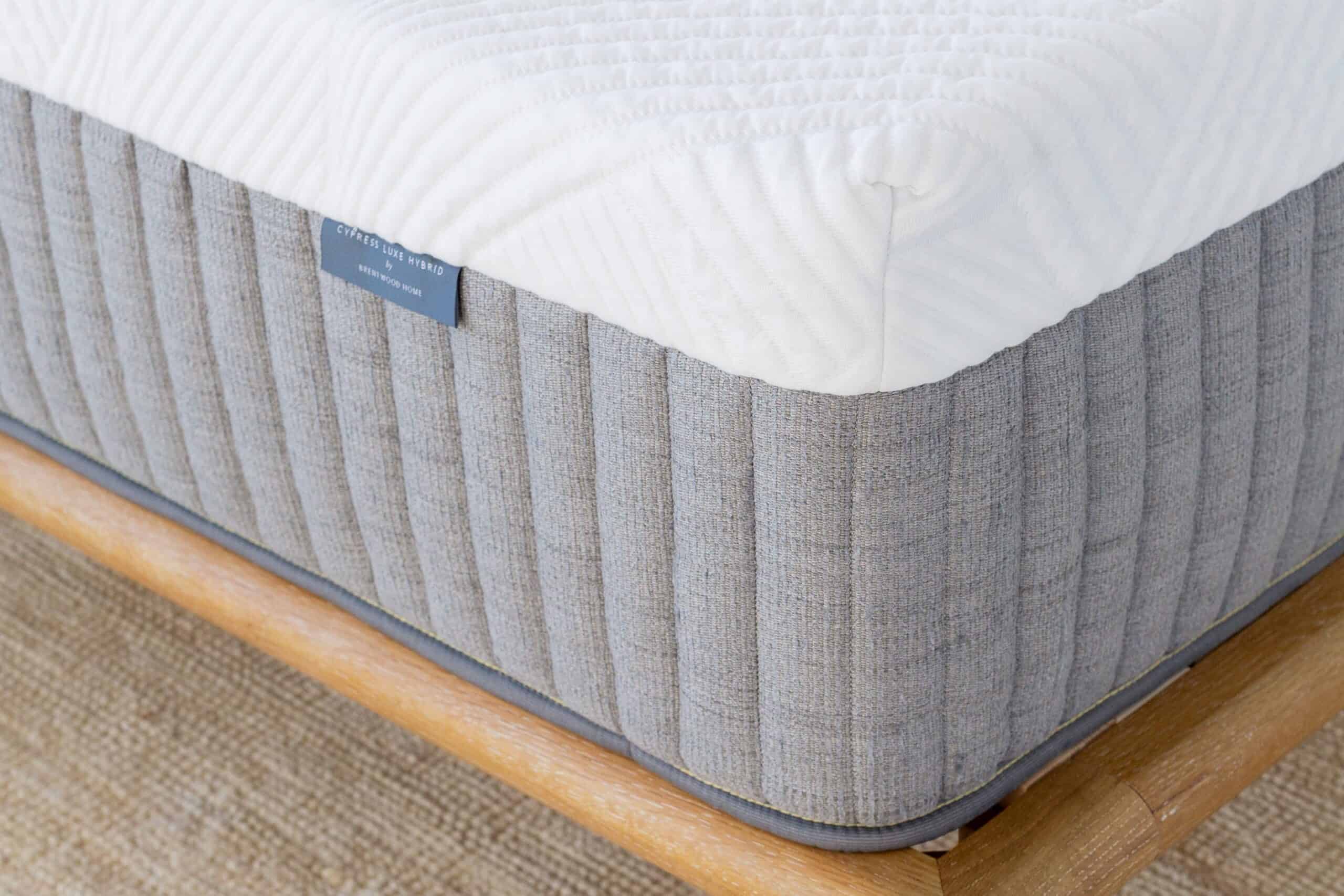Home>Furniture>Bedroom Furniture>What To Know When Buying A Mattress
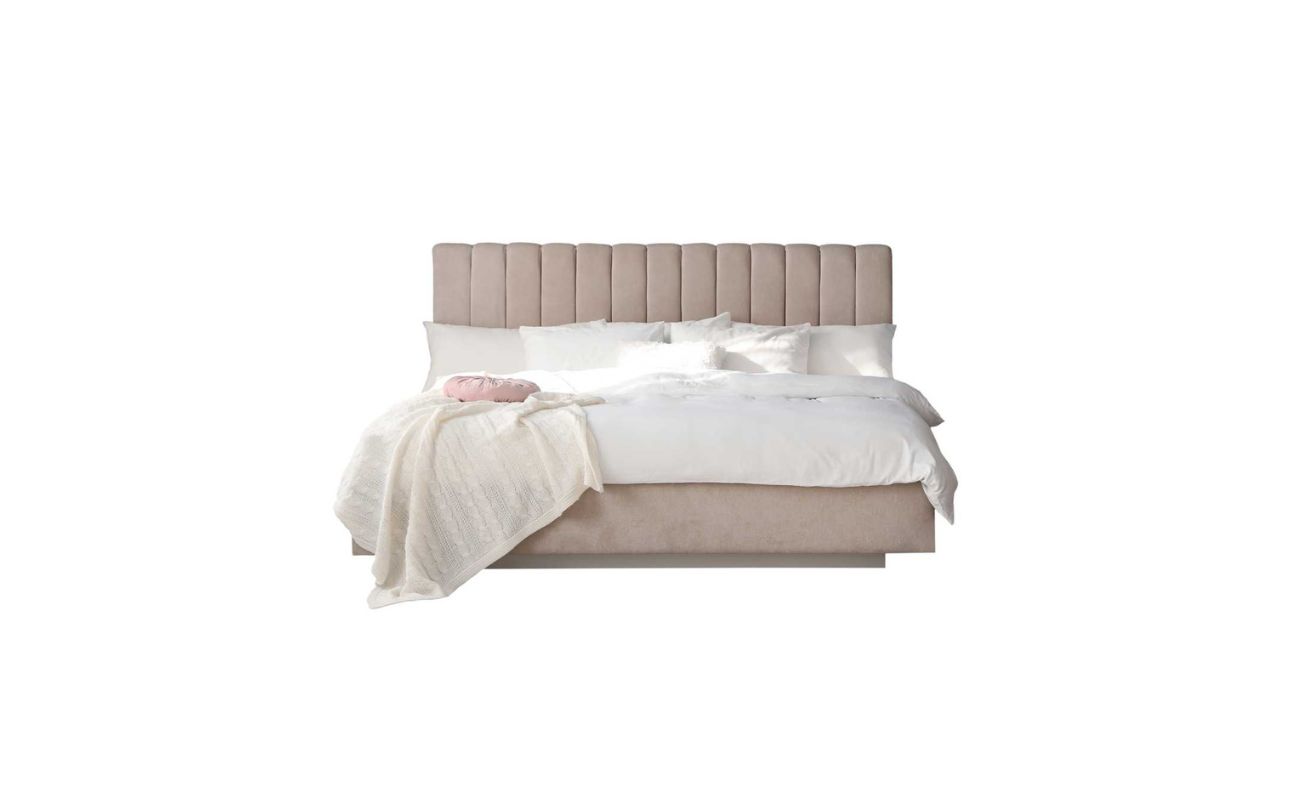

Bedroom Furniture
What To Know When Buying A Mattress
Modified: November 2, 2024
Looking to buy a mattress for your bedroom? Discover key things to know when shopping for bedroom furniture, including tips and considerations for finding the perfect mattress.
(Many of the links in this article redirect to a specific reviewed product. Your purchase of these products through affiliate links helps to generate commission for Storables.com, at no extra cost. Learn more)
Introduction
When it comes to creating a cozy and inviting bedroom, one of the most crucial elements to consider is the mattress. A good mattress not only enhances your sleep quality but also ensures proper support and comfort for your body. However, with so many options available in the market, finding the right mattress can be a daunting task.
In this comprehensive guide, we will explore the various factors to consider when buying a mattress. From size and type to firmness and durability, we will delve into each aspect to help you make an informed decision.
So, whether you’re looking for a new mattress for your own bedroom or considering an upgrade for a guest room, sit back, relax, and let’s dive into the world of mattress buying.
Key Takeaways:
- Finding the perfect mattress involves considering factors like comfort, support, durability, and budget. It’s crucial to prioritize quality and comfort over price and explore various options before making a decision.
- Understanding mattress types, firmness levels, and where to buy can help you make an informed decision. Consider your unique needs, preferences, and sleeping habits to find the right mattress for a restful night’s sleep.
Read more: What To Know When Buying A Hot Tub
Factors to Consider
Before jumping into the specifics of mattress size, type, firmness, and other features, it’s important to understand the key factors to consider when purchasing a mattress. These factors will help guide your decision-making process and ensure you find the perfect mattress for your needs.
- Comfort: The comfort level of a mattress is subjective and varies from person to person. Some prefer a plush, soft feel, while others prefer a firmer surface. It’s crucial to choose a mattress that aligns with your comfort preferences to ensure a good night’s sleep.
- Support: A mattress should provide adequate support for your body, ensuring that your spine stays properly aligned throughout the night. Look for a mattress that offers sufficient support to prevent back pain and discomfort.
- Durability: Investing in a durable mattress is essential to ensure its longevity. Look for mattresses made from high-quality materials that can withstand regular use and maintain their shape and support over time.
- Motion Transfer: If you share your bed with a partner, you’ll want to consider a mattress with minimal motion transfer. This means that when your partner moves or gets out of bed, you won’t be disturbed by the movement.
- Temperature Regulation: If you tend to sleep hot or live in a warm climate, look for a mattress with cooling properties. Many mattresses now feature materials and technologies that promote airflow and help regulate body temperature during sleep.
- Allergies: If you suffer from allergies, consider a mattress that is hypoallergenic and resistant to dust mites and other common allergens. This will help create a healthier sleeping environment and reduce allergen-related discomfort.
- Budget: Set a budget for your mattress purchase, keeping in mind that a mattress is a long-term investment in your sleep quality and overall well-being. While it’s important to stay within your budget, try to prioritize quality and comfort over price.
By considering these factors, you’ll be well-prepared to find a mattress that meets your specific needs and preferences. Now, let’s explore the different mattress sizes available and how to choose the right one for your bedroom.
Mattress Size
Choosing the right mattress size is essential to ensure a comfortable and spacious sleeping environment. The size of your mattress will depend on factors such as the size of your bedroom, the number of sleepers, and personal preference.
Here are some common mattress sizes available:
- Twin: A twin mattress, also known as a single mattress, is the smallest standard mattress size. It measures approximately 38 inches wide and 75 inches long. It’s ideal for children, solo sleepers, or those with limited space in their bedroom.
- Twin XL: The twin XL mattress is slightly longer than the standard twin size, measuring around 38 inches wide and 80 inches long. This size is commonly found in college dormitories and is suitable for taller individuals who need extra legroom.
- Full/Double: The full or double mattress is wider than a twin mattress, measuring around 54 inches wide and 75 inches long. It offers more space for single sleepers or couples who prefer to sleep closer together.
- Queen: The queen mattress is one of the most popular sizes for couples. It provides ample space, measuring approximately 60 inches wide and 80 inches long. It’s a versatile size that fits well in most bedrooms.
- King: The king mattress is the widest standard size available, measuring around 76 inches wide and 80 inches long. It offers plenty of room for couples who like to spread out or for individuals who prefer extra space while sleeping.
- California King: The California king mattress is slightly longer and narrower than a standard king size, measuring approximately 72 inches wide and 84 inches long. It’s a great choice for taller individuals who need the extra length.
When choosing a mattress size, consider the size of your bedroom and the amount of space available. It’s important to leave enough room for furniture and easy movement within the room. If you sleep with a partner or pets, consider a larger size to ensure everyone has enough space to sleep comfortably.
Now that you have an understanding of the different mattress sizes, let’s move on to exploring the various mattress types and their unique features.
Mattress Type
When it comes to mattress types, there are several options available, each with its own unique construction and characteristics. Understanding the differences between these types can help you choose the one that best suits your needs and preferences.
Here are some common mattress types:
- Innerspring Mattresses: Innerspring mattresses are one of the most traditional types of mattresses. They are constructed with a system of metal coils or springs that provide support and bounce. Innerspring mattresses often have a layer of padding or foam on top for added comfort.
- Memory Foam Mattresses: Memory foam mattresses are known for their contouring and pressure-relieving properties. They are made from a high-density viscoelastic foam that molds to the shape of your body, providing customized support. Memory foam mattresses are great for relieving pain and reducing motion transfer.
- Latex Mattresses: Latex mattresses are made from natural or synthetic latex foam. They offer a responsive and bouncy feel while still providing excellent support. Latex mattresses are known for their durability, hypoallergenic properties, and breathability.
- Hybrid Mattresses: Hybrid mattresses combine the benefits of different materials, typically combining an innerspring system with layers of foam or latex. This combination provides the support of innerspring mattresses with the contouring and pressure-relieving properties of foam or latex. Hybrid mattresses are great for sleepers who want the best of both worlds.
- Pillow-top Mattresses: Pillow-top mattresses have an extra layer of padding or foam sewn onto the top for added comfort. This additional cushioning provides a plush and luxurious feel. Pillow-top mattresses are ideal for those who prefer a softer sleeping surface.
- Adjustable Beds: Adjustable beds are not technically a mattress type, but they are worth mentioning. These beds allow you to adjust the angle of inclination, providing customized support and comfort. They are particularly beneficial for individuals with specific medical conditions or those who like to read or watch TV in bed.
Each mattress type has its own set of pros and cons, so it’s important to consider your specific needs, preferences, and sleep habits when making a choice. Whether you prefer the traditional support of an innerspring mattress or the contouring comfort of memory foam, there’s a mattress type out there to suit your needs.
Next, let’s delve into the topic of mattress firmness and how to determine the right level of firmness for your needs.
Mattress Firmness
When choosing a mattress, the firmness level is another important consideration. The firmness of a mattress refers to how soft or firm the sleeping surface feels. The right level of firmness for you will depend on your personal preference, body type, and sleeping position.
Here’s a breakdown of the different firmness levels commonly available:
- Extra Firm: Extra firm mattresses offer very little give and have a solid, rigid feel. They provide maximum support and are typically recommended for individuals who prefer a very firm sleeping surface or those who have specific medical conditions that require extra support.
- Firm: Firm mattresses have minimal sinkage and provide a solid feel with moderate cushioning. They offer a good level of support and are suitable for stomach sleepers or individuals who prefer a firmer surface for proper spinal alignment.
- Medium Firm: Medium firm mattresses strike a balance between support and comfort. They offer a slightly softer feel than a firm mattress but still provide adequate support. Medium firm mattresses are suitable for back sleepers or individuals who prefer a combination of support and cushioning.
- Medium: Medium mattresses have a plusher feel and offer more sinkage and contouring. They provide a good balance of support and comfort and are generally suitable for a wide range of sleepers, including those who sleep in multiple positions.
- Soft: Soft mattresses offer significant sinkage and a plush, cushiony feel. They provide deep contouring and are ideal for side sleepers who need pressure relief on their hips and shoulders. Soft mattresses may not offer enough support for individuals with back or stomach sleeping preferences.
It’s important to note that mattress firmness is a personal preference, and what feels comfortable to one person may not be comfortable for another. It’s recommended to try out different firmness levels and assess your comfort and support level before making a decision.
In addition to firmness, it’s essential to consider the support and comfort features of a mattress. Let’s explore those factors next.
Support and Comfort
When it comes to choosing a mattress, finding the right balance of support and comfort is crucial for a good night’s sleep. Support refers to the mattress’s ability to keep your spine aligned in a neutral position, while comfort is the subjective feeling of coziness and pressure relief.
Here are some factors to consider when assessing the support and comfort of a mattress:
- Materials: The type of materials used in the construction of a mattress can impact its support and comfort. For example, memory foam and latex mattresses are known for their excellent contouring and pressure-relieving capabilities, while innerspring mattresses provide more bounce and responsiveness.
- Layer Construction: The number and arrangement of comfort layers in a mattress can affect its overall comfort. Look for mattresses with multiple layers of different materials, as this can provide a combination of support and cushioning.
- Edge Support: Consider the level of edge support offered by a mattress, especially if you tend to sleep near the edge. A mattress with reinforced edges provides better stability and prevents you from rolling off the bed.
- Body Weight: Your body weight plays a role in determining the level of support and comfort you need. Heavier individuals may require a firmer mattress to ensure proper support, while lighter individuals may find a plush mattress more comfortable.
- Sleeping Position: Your preferred sleeping position can influence the level of support and comfort you need. Side sleepers typically benefit from a mattress with good pressure relief to cushion their hips and shoulders. Back sleepers may prefer a mattress that offers more support to maintain proper spinal alignment, while stomach sleepers usually need a firmer surface to prevent spinal misalignment.
As you search for a mattress, it’s important to try out different options and pay attention to how they feel in terms of support and comfort. Remember, everyone’s needs and preferences are unique, so what works for someone else may not work for you.
Next, let’s discuss the importance of motion transfer in a mattress and how it can affect your sleep experience.
Motion Transfer
If you share your bed with a partner or a restless sleeper, you may be familiar with the annoyance of being disturbed by their movements during the night. This is where motion transfer comes into play when considering a mattress. Motion transfer refers to the ability of a mattress to absorb and isolate movement, minimizing disruptions to your sleep.
Here are a few key considerations regarding motion transfer:
- Innerspring Mattresses: Traditional innerspring mattresses have a higher tendency to transfer motion due to the interconnected coil system. When one person moves, the motion can ripple through the mattress, potentially disturbing their sleep partner. However, some modern innerspring mattresses are designed with pocketed coils, which can decrease motion transfer.
- Memory Foam and Latex Mattresses: Memory foam and latex mattresses are known for their ability to absorb and isolate motion. The viscoelastic properties of memory foam and the responsive elasticity of latex allow these mattresses to minimize motion transfer effectively.
- Hybrid Mattresses: Hybrid mattresses, which combine innerspring systems with foam or latex layers, offer a balance between motion isolation and responsiveness. The combination of different materials can help to minimize motion transfer while still providing some bounce and ease of movement.
When choosing a mattress with minimal motion transfer, consider your sleeping habits and preferences. If you or your partner toss and turn frequently during sleep, or if you are a light sleeper easily disturbed by movement, opt for a mattress that excels in isolating motion.
Now, let’s shift our focus to the importance of temperature regulation in a mattress.
When buying a mattress, consider your sleeping position and any specific health concerns. Side sleepers may prefer a softer mattress, while back or stomach sleepers may need a firmer one.
Temperature Regulation
A comfortable sleeping temperature is crucial for a restful night’s sleep. Mattresses that can effectively regulate temperature help create a more comfortable sleep environment by dissipating heat and promoting airflow. Here are a few factors to consider when it comes to temperature regulation in a mattress:
- Materials: The materials used in a mattress can play a significant role in temperature regulation. Some mattress materials, such as certain types of memory foam or latex, may retain heat and cause sleepers to feel hot. Look for mattresses that use breathable materials or incorporate specialized cooling technologies to promote airflow and heat dissipation.
- Open-Cell Construction: Mattresses with open-cell foam construction allow for better air circulation, helping to regulate temperature. This design allows air to flow more freely through the mattress, preventing heat buildup and promoting a cooler sleep surface.
- Gel Infusions: Some mattresses feature gel-infused foam layers that are designed to dissipate heat and provide a cooler sleeping experience. The gel particles help absorb and redistribute body heat away from the sleeper, preventing excessive warmth during the night.
- Breathable Covers: The mattress cover or top layer material can also contribute to temperature regulation. Look for covers made from breathable fabrics that can wick away moisture and allow for improved airflow, helping to maintain a cooler sleeping environment.
- Specialized Cooling Technologies: Several mattress brands incorporate advanced cooling technologies into their designs. These technologies can include phase change material (PCM), which helps regulate temperature by absorbing or releasing heat as needed, or airflow-enhancing systems that facilitate better ventilation throughout the mattress.
If you tend to sleep hot or live in a warm climate, investing in a mattress with effective temperature regulation can significantly enhance your sleeping experience. By keeping your body cool and comfortable throughout the night, you’ll be able to enjoy more restful and uninterrupted sleep.
Now, let’s discuss the importance of durability and longevity when selecting a mattress.
Durability and Longevity
When investing in a new mattress, durability and longevity are important considerations. You want a mattress that will provide comfort and support for many years to come. Here are some factors to keep in mind when assessing the durability of a mattress:
- Quality Materials: High-quality materials are essential for a durable mattress. Look for mattresses made from durable foams, sturdy coils, and durable fabrics. These materials are more likely to withstand regular use and maintain their shape and support over time.
- Construction: Pay attention to the overall construction of the mattress. Look for well-constructed mattresses with reinforced edges, sturdy seams, and solid support systems. A well-built mattress is more likely to withstand wear and tear and have a longer lifespan.
- Brand Reputation: Research the reputation of the mattress brand before making a purchase. Brands known for their high-quality products and excellent customer service are more likely to offer durable mattresses that stand the test of time.
- User Reviews: Read reviews from other customers to get insights into the durability and longevity of the mattress you are considering. Real-life experiences can provide valuable information about how well a mattress holds up over time.
While it’s important to keep in mind that the lifespan of a mattress can vary depending on factors such as usage, body weight, and maintenance, investing in a durable and long-lasting mattress is a wise decision. It ensures that you will enjoy a comfortable sleep surface for years without needing to replace it too soon.
Now that you understand the importance of durability and longevity, let’s move on to discussing the price range you can expect when buying a mattress.
Read more: When Is Best Time To Buy A Mattress
Price Range
When it comes to purchasing a mattress, the price range can vary significantly depending on various factors such as brand, materials, size, and features. Understanding the different price ranges available can help you set a budget and find a mattress that meets your needs without breaking the bank.
Here’s a breakdown of common price ranges for mattresses:
- Budget-Friendly: Budget-friendly mattresses typically range from $200 to $800 for a queen-sized mattress. These mattresses often offer basic features and may not have advanced technologies or luxury materials. However, they can still provide adequate comfort and support for those on a tighter budget.
- Mid-Range: Mid-range mattresses typically range from $800 to $1,500 for a queen-sized mattress. In this price range, you can expect a wider variety of options with better construction, more advanced features, and improved materials. These mattresses often strike a balance between quality and affordability.
- Luxury: Luxury mattresses typically start at $1,500 for a queen-sized mattress and can exceed $5,000 or more. These mattresses use premium materials, advanced technologies, and innovative features to provide the ultimate sleeping experience. They often come with longer warranties and are known for their exceptional comfort and durability.
It’s important to note that while higher-priced mattresses may offer additional features and luxurious materials, they’re not always necessary for a good night’s sleep. It ultimately comes down to your personal preferences, budget, and what you find most comfortable.
Keep in mind that seasonal sales, promotions, and discounts are common in the mattress industry. Don’t hesitate to shop around and compare prices to find the best deal that fits within your budget.
Now that we’ve discussed the price range, let’s delve into the importance of a mattress warranty.
Mattress Warranty
When purchasing a mattress, it’s important to consider the warranty offered by the manufacturer. A mattress warranty provides a guarantee of the mattress’s quality, durability, and the manufacturer’s commitment to addressing any defects or issues that may arise during a specified period of time.
Here are some key points to consider regarding mattress warranties:
- Warranty Length: The length of a mattress warranty can vary from brand to brand. It typically ranges from 5 to 20 years, with some higher-end mattresses offering even longer warranties. Consider your mattress’s expected lifespan and select a warranty that provides coverage for the desired duration.
- Covered Issues: Review the warranty terms to understand what issues are covered. Most warranties cover manufacturing defects such as sagging, broken coils, or foam deterioration. However, they may not cover normal wear and tear or damage caused by improper use or neglect.
- Prorated vs. Non-Prorated: Some warranties are prorated, meaning the coverage and replacement cost decrease over time. Others offer non-prorated coverage, where the manufacturer will fully cover the repair or replacement cost for the specified period. Understand the prorated or non-prorated terms of the warranty before making a decision.
- Registration: Some mattress manufacturers require you to register your mattress to activate the warranty. Be sure to follow any registration instructions provided by the manufacturer to ensure your warranty is valid.
- Care and Maintenance: Check the warranty terms for any specific care and maintenance requirements. Failure to follow these instructions may void the warranty. Regularly rotating and flipping the mattress, using a proper foundation, and keeping the mattress clean are common care instructions for maintaining warranty coverage.
- Customer Support: Research the reputation and customer service of the mattress brand. A reliable and reputable brand will have responsive customer support to assist with any warranty-related issues or concerns.
Understanding and following the warranty terms will give you peace of mind and ensure that you can seek recourse in the event of any manufacturing defects or performance issues. Remember to keep your warranty documents and proof of purchase in a safe place for easy reference.
Now that we’ve covered the importance of mattress warranties, let’s move on to discussing where to buy a mattress.
Where to Buy
When it comes to purchasing a mattress, you have several options for where to buy. Here are some common places to consider:
- Retail Stores: Brick-and-mortar mattress stores allow you to try out different mattresses in person before making a purchase. Sales associates can assist you in finding the right mattress based on your preferences and budget. Keep in mind that prices at retail stores may be higher, as they have overhead costs to cover.
- Online Retailers: Online retailers offer the convenience of shopping from the comfort of your home. They typically provide detailed product descriptions, customer reviews, and competitive pricing. Many online retailers also offer hassle-free returns and generous trial periods, allowing you to test the mattress for a certain period before committing.
- Furniture Stores: Furniture stores often carry a selection of mattresses alongside other bedroom furniture pieces. Shopping at a furniture store allows you to explore different styles and designs and may offer package deals if you’re looking to purchase multiple items.
- Direct from Manufacturer: Some mattress brands sell their products directly to consumers, cutting out the middleman and offering competitive prices. Buying directly from the manufacturer can give you access to exclusive models, customization options, and direct customer support.
- Secondhand or Resale: If you’re on a tight budget or looking for a temporary solution, you may consider buying a used mattress from a reputable source. Just be cautious and ensure the mattress is clean and in good condition to avoid hygiene issues and lack of support.
Whatever method you choose, it’s important to do thorough research, read reviews, and compare prices to find the best option for your specific needs. Consider factors such as delivery options, warranties, return policies, and customer service when making a decision.
Now that you know where to buy, let’s recap the important points we’ve covered in this article.
Conclusion
Choosing the right mattress is essential for a good night’s sleep and overall well-being. By considering factors such as size, type, firmness, support, comfort, motion transfer, temperature regulation, durability, price range, warranty, and where to buy, you can make an informed decision that meets your unique needs and preferences.
Remember, comfort is subjective, so take the time to try out different mattresses and pay attention to how they feel. Consider your sleeping position, body weight, and any specific requirements you may have to find a mattress that offers the right level of support and comfort for you.
Set a budget that aligns with your financial capabilities and prioritize quality and durability. Keep in mind that investing in a durable mattress can save you money in the long run by providing years of comfortable sleep without needing frequent replacements.
Researching and understanding warranty terms is crucial, as it ensures you are protected against manufacturing defects or performance issues. Consider registering your mattress as required and follow any care instructions provided to maintain warranty coverage.
When it comes to where to buy, explore various options like retail stores, online retailers, furniture stores, or buying directly from the manufacturer to find the best prices, selection, and customer service that suit your needs.
With this comprehensive guide, you are now equipped with the knowledge and insights necessary to navigate the world of mattress buying. So, go forth and find the perfect mattress that will provide you with the comfort, support, and restful sleep you deserve.
Frequently Asked Questions about What To Know When Buying A Mattress
Was this page helpful?
At Storables.com, we guarantee accurate and reliable information. Our content, validated by Expert Board Contributors, is crafted following stringent Editorial Policies. We're committed to providing you with well-researched, expert-backed insights for all your informational needs.
